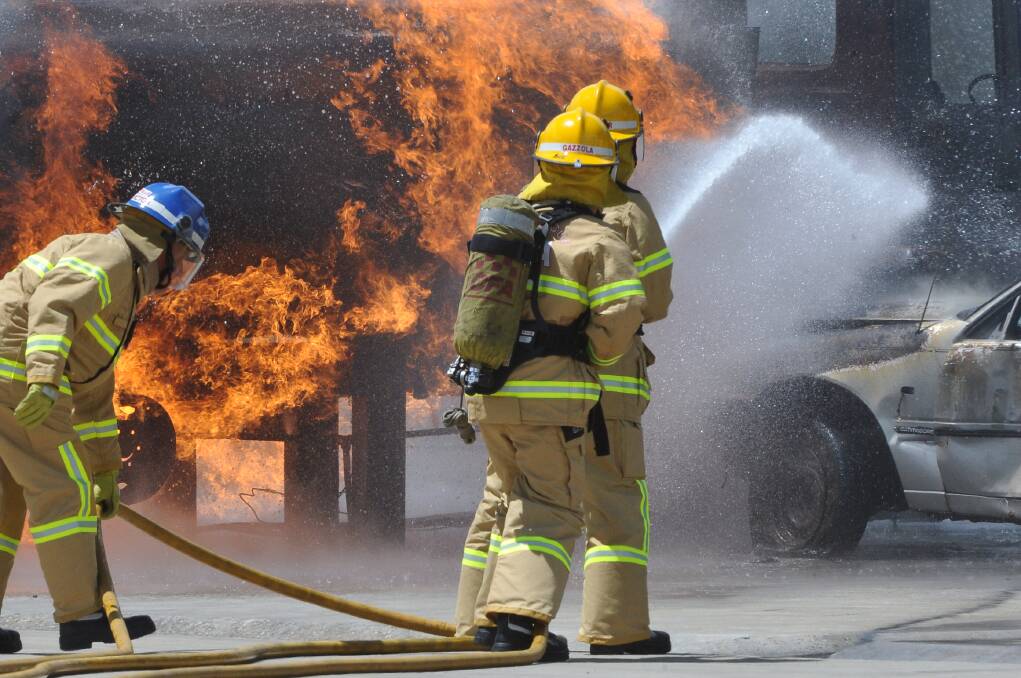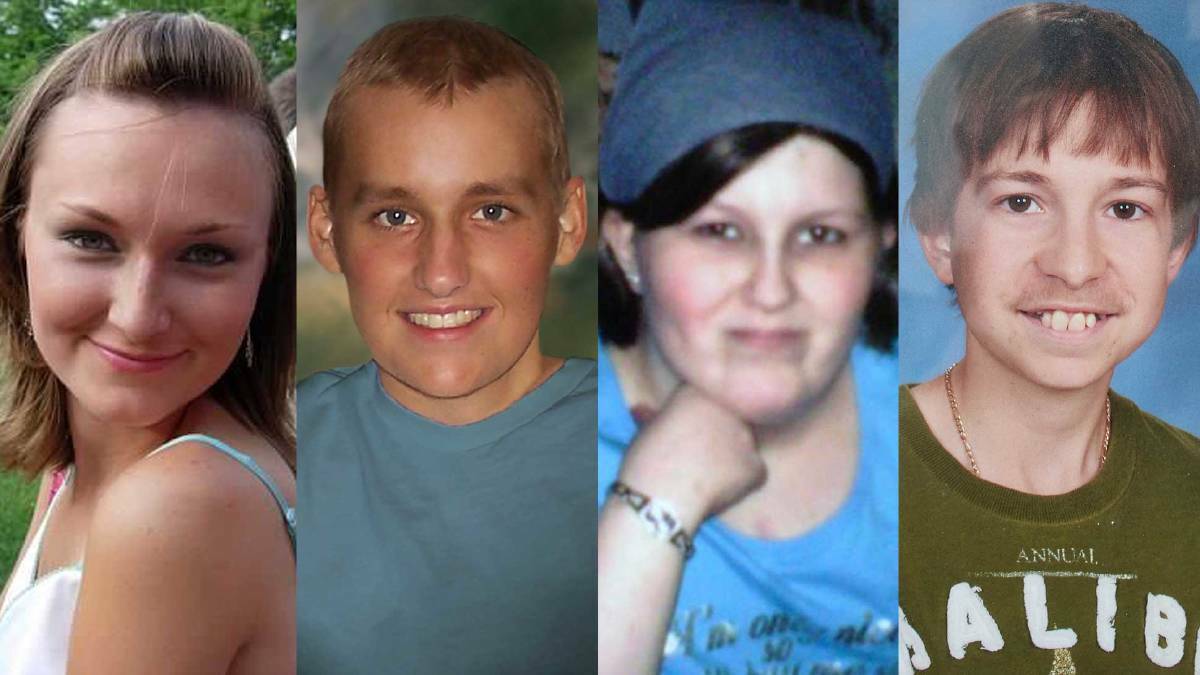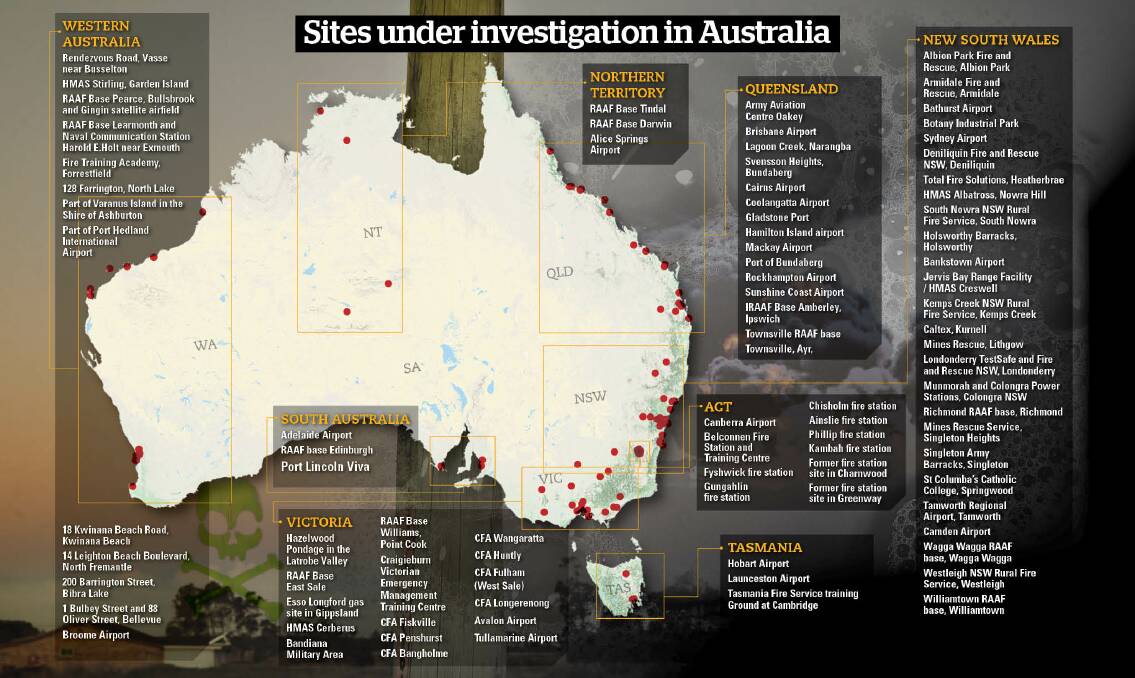REVEALED | The cities, towns with danger on the doorstep

On a rise surrounded by bushland in Sydney’s north-west, members of the Westleigh Rural Fire Service have spent years training, putting out blazes in preparation for the real thing.
It is a peaceful spot. Down the slope lies a walking trail and a creek, while the flat land next door sits vacant, awaiting council development into sporting fields. Each weekend, mountain bikers zoom through bush nearby.
What many in the area do not know - including the closest residents - is that the RFS site is contaminated by toxins that have spread uphill and down.
Fairfax Media can reveal that the training ground at Westleigh is one of 10 sites in Sydney, 25 in NSW and more than 90 sites across the nation that authorities are investigating for elevated levels of per- and polyfluoroalkyl chemicals (PFAS).
Also on the list is the now defunct CFA training site at Fiskville, near Ballan.
At all but a handful of the sites, most residents were oblivious to the toxic threat that lurks nearby.
A Fairfax Media investigation revealed over the weekend that at least 21 children at a US high school have battled cancer through their school years, or shortly after, while growing up in a city whose water supply was contaminated with PFAS.

Fairfax Media has previously revealed 50 cancer cases over a 15-year period on a road near the Williamtown air base, an area that has also been heavily polluted with PFAS chemicals from firefighting foam.
In 2009, a global agreement was reached to ban one of the chemicals, perfluorooctane sulfonate (PFOS), by listing it on the United Nation’s Stockholm Convention.
In the years since, Australia is one of the only countries that has not ratified the decision. At least 171 countries have agreed to the phase-out, including the UK, Germany and China.
Meanwhile, the federal government is defending multiple class actions from towns across Australia where contamination has occurred. The assistant environment minister Melissa Price has responsibility for the issue and was not available for comment on Sunday.

The Department of Health maintains there is no consistent evidence the toxins cause “important” health effects, in contrast to the US EPA, which has concluded they are a human health hazard that - at high enough levels - may cause immune dysfunction, reproductive issues and certain types of cancer in humans.
Man-made PFAS chemicals were a lucrative discovery for industry due to their unusual properties: they have been described as “virtually indestructible” in the environment and repel grease, oil and water. They were manufactured by Fortune 500 company 3M for 50 years, with the two best known of the family being PFOS and perfluorooctanoic acid (PFOA).
RELATED READING:
PFOS was the key ingredient in 3M’s popular fabric protector Scotchguard, and was used widely in firefighting foams, food packaging and metal plating. The company also manufactured vast quantities of PFOA for sale to Dupont to produce Teflon cookware.
By the time 3M made the surprise announcement it would be voluntarily exiting the PFAS business in 2000, PFOS had contaminated the blood of more than 95 per cent of the human population along with wildlife in remote corners of the globe.
The chemicals still pose a threat in Australia today, mainly because of their use Aqueous Film Forming Foam (AFFF), a fire retardant manufactured by 3M and used by the military, commercial airports, fire brigades and heavy industry for decades. In many cases the run-off was flushed directly into the environment following training exercises.
Fiskville failings
The mothballed Fiskville academy, 95 kilometres west of Melbourne, is so far the most widespread case of PFAS exposure in Victoria.
Up to 87,000 people are believed to have been put at risk of exposure to the carcinogens there over 30 years.
A 2015 Monash University study of 606 people who worked at the site between 1971 and 1999 identified 69 cancer cases that resulted in 16 deaths.
The findings delivered in the May 2016 final report of a Victorian parliamentary inquiry into Fiskville were damning. CFA management had allowed its members at Fiskville and their families to be exposed to toxic chemicals with known links to cancer and other illnesses, it found.
The CFA had known about the possible health risks since the 1990s, the inquiry heard, but did not notify staff and volunteers past and present. That only came to light in 2011, in an expose in theHerald Sun.
The inquiry made a number of recommendations, including a redress scheme.
In May 2017, while announcing legislation giving firefighters who get cancer because of their job a presumptive right to compensation, Victorian Premier Daniel Andrews said: "We will make further announcements about a proper redress scheme for those who were for too long lied to.
"It's their families we now deal with because they themselves are no longer with us anymore."
Yet 12 months after he made those comments, and two years since his government agreed to compensate those affected, no scheme has been announced.
In response to questions from Fairfax Media, the state government said it was "continuing to examine redress scheme options". When pressed it gave no indication of when a compensation package would be finalised.
"Our focus has always been with those affected by their time spent at Fiskville," a spokeswoman said. "We acted swiftly to close the site in 2015, and we are acting on the recommendations of the Parliamentary Inquiry."
In its response to the inquiry, the government acknowledged that many people had concerns about how their time at Fiskville may have affected them.
It gave in-principle support to establishing a redress scheme, subject to consideration of who would be eligible, how it would affect their legal rights or other forms of compensation and how it should be resourced.
"The government is in the process of examining these issues," a spokeswoman said.
A class action has been on ice since the government committed to compensation. Some applicants have been told to expect an announcement on compensation within months.
The family of one former Fiskville employee Brian Potter received a state government payout last year. Mr Potter, a former CFA chief officer who helped expose the Fiskville scandal, died in 2014 after losing a workers' compensation bid.
The sites identified across Australia
In NSW, 15 sites are under the microscope, including eight fire brigade training grounds, Kemps Creek and Westleigh in Sydney among them. Matthew Jigalin, 20, lives a street away from the Westleigh Rural Fire Service ground and regularly mountain bikes in the area. He did not know about the PFAS.
Neither did Stefan Popoksvi, 20, who recalled swimming in the creek near the site as a child.
Long-time resident Warren Burgess, who had followed coverage of the PFAS contamination near Newcastle, said when it came to his neighbourhood, “we’ve had no warning, no news at all”.
Four commercial airports in NSW are under scrutiny, including Camden and Bankstown Airports. The Botany Bay area, near Sydney Airport, is a known hotspot and fishing restrictions were introduced at the end of last year.
The NSW Environment Protection Authority suggested people limit their consumption of eight species of fish caught from Port Botany and the Georges River. But when approached by Fairfax Media, the huddle of fishermen casting their lines into the bay at the mouth of the Cooks River near Brighton Le Sands said they were unaware of any guidelines.
“I haven’t been told,” Joey Carino said around sunrise on Wednesday. Soon after he reeled in a silver trevally, one carrier of the chemical spreading through Sydney in food, water, soil and air.
It was a similar story out near another RFS training facility at Kemps Creek, also the subject of an extensive PFAS investigation. Bruce Emms, who worked for a road construction business next door, said “they haven’t said anything about it”.
Fairfax Media canvassed neighbours and found all but one were unaware of the contamination or investigation. This included market gardeners picking produce ahead of weekend sales.
But an RFS spokesman said Kemps Creek residents and businesses had been notified through door knocks, community meetings, flyers and online. Only one area had tested above the PFAS acceptable guidelines while recommendations not to use surface water for drinking, cooking or watering produce were precautionary.
As for the training site at Westleigh, the spokesman said residents were not in the PFAS “migration pathway” and so not at risk, while bushwalking and mountain biking groups had been notified.
“Initial testing has shown there is a very low risk to the community, including bush walkers and mountain bike riders,” he said.


